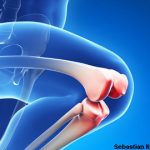(Reuters Health)—Total knee replacement surgery can be a cost-effective procedure for patients with severe obesity and osteoarthritis (OA), even when they also have comorbidities such as cardiovascular disease or type 2 diabetes, a new study suggests. Researchers did a cost-benefit analysis for two patient populations (over 65 years, and age 50 to 65) who had…
Knee Replacement in Younger Patients Has Higher Complication Rate
NEW YORK (Reuters Health)—Total knee replacement (TKA) is increasingly being performed in younger patients, and new research suggests that these patients have a higher risk for complications than older patients. “The number of knee replacements we are doing in younger and younger patients keeps increasing every year and we need to let these patients know…
Younger Patients Getting Knees & Hips Replaced
NEW YORK (Reuters Health)—Patients undergoing total joint replacement are younger now than they were in 2000, new research indicates. The average patient undergoing a total hip replacement (THR) in 2014 was 64.9 years, while the average patient in 2000 was 66.3 years. Similarly, the average patient undergoing a total knee replacement (TKR) was 65.9 in…

Demand for Revision Total Knee Arthroplasty Is on the Rise
In the next five to 10 years, the frequency of revision total knee arthroplasty is expected to grow 600%, due to the rise in obesity in the U.S. population and increase in primary knee replacement surgeries. Physicians can use different tools to help decrease the risk of premature implant failure and improve patient outcome…

Strategies for Successful Joint Replacement Surgery
Collaboration among all providers—surgeon, rheumatologist, physical therapist, etc.—is essential for patients with a rheumatic disease who are about to undergo total joint arthroplasty to reach their goals, including reduced pain and improved mobility…
Time to Rethink Inpatient Rehab After Knee Replacement?
NEW YORK (Reuters Health)—Inpatient rehabilitation did not lead to better mobility following total knee replacement compared with a home-based program in a randomized controlled trial (RCT) conducted in Australia. The findings do not support inpatient rehabilitation for adults undergoing uncomplicated total knee arthroplasty, conclude the authors in JAMA on March 14.1 “Normally, one study is…
Liposomal Bupivacaine Helpful in Total Knee Arthroplasty
NEW YORK (Reuters Health)—Local infiltration of liposomal bupivacaine in patients undergoing total knee arthroplasty (TKA) curbed use of opioids and antiemetics and appeared to be both beneficial and cost effective in a recent study. As Dr. Bryan Sakamoto told Reuters Health by email, the results “suggest that liposomal bupivacaine is effective as part of a…
Self-Reported Knee Instability After Surgery Linked to Pain & Limited Mobility
Patients with osteoarthritis often consider total knee replacement surgery to resolve pain and increase mobility. However, a recent study found that self-reported knee instability and pain are prevalent in patients both before and after primary unilateral total knee replacement surgery. One-third of the study’s participants still had knee instability after surgery, experiencing knee buckling and shifting associated with pain and limited activity. Using physical performance measurements, researchers linked self-reported knee instability following surgery to pain and poor lower-extremity muscle strength…
Knee Replacement Surgery Works, but So Can Nonsurgical Techniques
(Reuters Health)—Total knee replacement can usually relieve pain and improve function, but a nonsurgical regimen can also be effective in some people without posing the complication risks of surgery, according to a new study. The study found that while 85% of patients who underwent surgery showed clinically-significant improvement after one year, so did 67% assigned…
ACR/ARHP Annual Meeting 2012: Physicians Search for Ways to Improve Clinical Outcomes for Total Knee Replacements (TKR)
Widely variable results for people post-TKR procedures have prompted doctors to develop a standardized approach to rehabilitation care